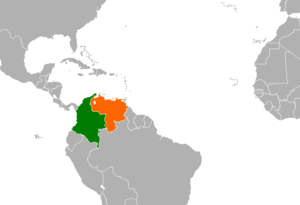Portal maintenance status: (April 2019)
|
 Latin America often refers to the regions in the Americas in which Romance Languages are the main languages and the culture and Empires of its peoples have had significant historical, ethnic, linguistic, and cultural impact. It is "commonly used to describe South America with the exception of Suriname, Guyana and the Falkland islands. Central America, Mexico, and most of the islands of the Caribbean". In a narrow sense, it refers to Spanish America and Brazil (Portuguese America). The term "Latin America" is broader than Hispanic America, which specifically refers to Spanish-speaking countries; and narrower than categories such as Ibero-America, a term that refers to both Spanish and Portuguese-speaking countries from the Americas, and sometimes from Europe. It could also theoretically encompass Quebec or Louisiana where French is still spoken and are historical remnants of the French Empire in that region of the globe. The term Latin America was first used in Paris at a conference in 1856 called "Initiative of America: Idea for a Federal Congress of the Republics" (Iniciativa de la América. Idea de un Congreso Federal de las Repúblicas), by the Chilean politician Francisco Bilbao. The term was further popularized by French emperor Napoleon III's government of political strongman that in the 1860s as Amérique latine to justify France's military involvement in the Second Mexican Empire and to include French-speaking territories in the Americas, such as French Canada, Haiti, French Louisiana, French Guiana, Martinique, Guadeloupe and the French Antillean Creole Caribbean islands Saint Lucia, and Dominica, in the larger group of countries where Spanish and Portuguese languages prevailed. The region covers an area that stretches from Mexico to Tierra del Fuego and includes much of the Caribbean. It has an area of approximately 19,197,000 km2 (7,412,000 sq mi), almost 13% of the Earth's land surface area. In 2019, Latin America had a combined nominal GDP of US$5.1 trillion and a GDP PPP of US$10.2 trillion. (Full article...) See also: Latino and Ibero-America
| ||||||||||||||||||||||||||||||||||||||
Latin America articles | |||||||||
|---|---|---|---|---|---|---|---|---|---|
| History |
| ||||||||
| Geography | |||||||||
| Politics |
| ||||||||
| Economy | |||||||||
| Society |
| ||||||||


 |
| Credit: Martin St-Amant |
The Grey Glacier and Grey Lake left of the Cordillera del Paine in Torres del Paine National Park in the Chilean Patagonia.
North and Central America
Caribbean
South America